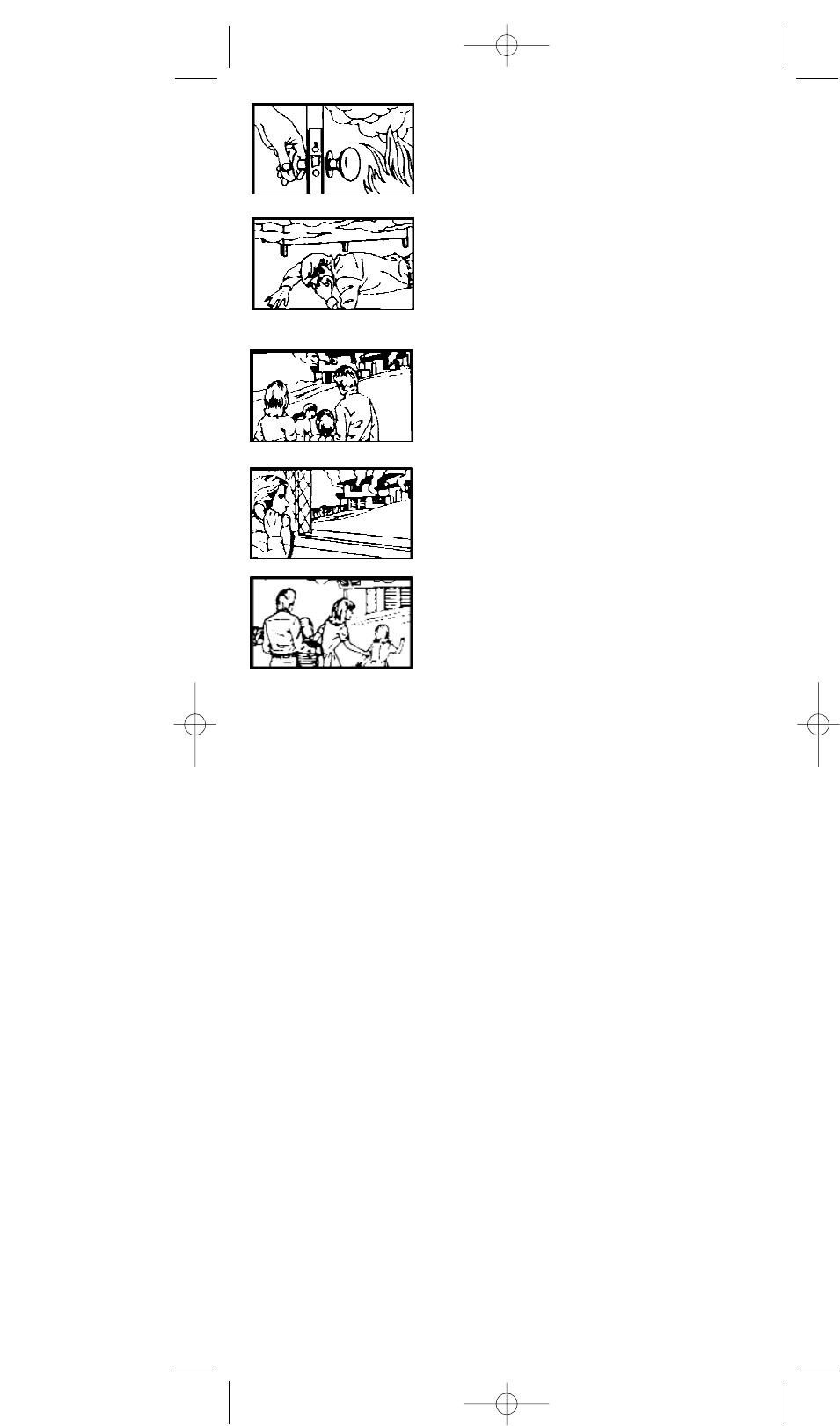
1. Check room doors for heat or smoke.
Do not open a hot door. Use an
alternate escape route. Close doors
behind you as you leave.
2. If smoke is heavy, crawl out, staying
close to floor. Take short breaths, if
possible, through a wet cloth or hold
your breath. More people die from
smoke inhalation than from flames.
3. Get out as fast as you can. Do not
stop for packing. Have a prearranged
meeting place outside for all family
members. Check everybody is there.
4. Call the Fire Brigade from a
neighbour’s house. Remember to give
your name and address.
5. NEVER re-enter a burning house.
Limitations of Smoke / Heat Alarms
Smoke / Heat Alarms have significantly helped to reduce the
number of fire fatalities in countries where they are widely
installed.
However independent authorities have stated that they may
be ineffective in some circumstances. There are a number of
reasons for this:
• The Alarms will not work if the mains power is off and the battery
is depleted. On the Ei141/144/146 alarms the batteries should be
replaced every three years as a precaution or if the unit gives a
low battery beep.
• NOTE: Constant exposure to high or low temperatures or
high humidity may reduce the life of the Alkaline battery.
• Smoke / Heat Alarms will not detect fire if sufficient smoke /
heat does not reach the alarm. Smoke / heat may be
prevented from reaching the Alarm if the fire is too far away,
for example, if the fire is on another floor, behind a closed
door, in a chimney, in a wall cavity, or if the prevailing air
draughts carry the smoke / heat away. Installing Smoke /
Heat Alarms on both sides of closed doors and installing
more than one Smoke / Heat Alarm as recommended in the
‘INSTALLER INSTRUCTIONS’ booklet significantly
improves the probability of early detection.
• The Alarm may not be heard.
• A Smoke / Heat Alarm may not wake a person who has
taken drugs or alcohol.
9
B16009-R0-160RC SERIES-U&C 17/1/07 11:13 AM Page 8














